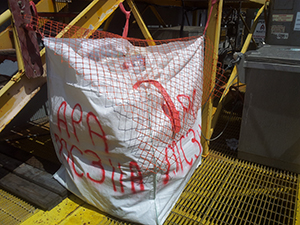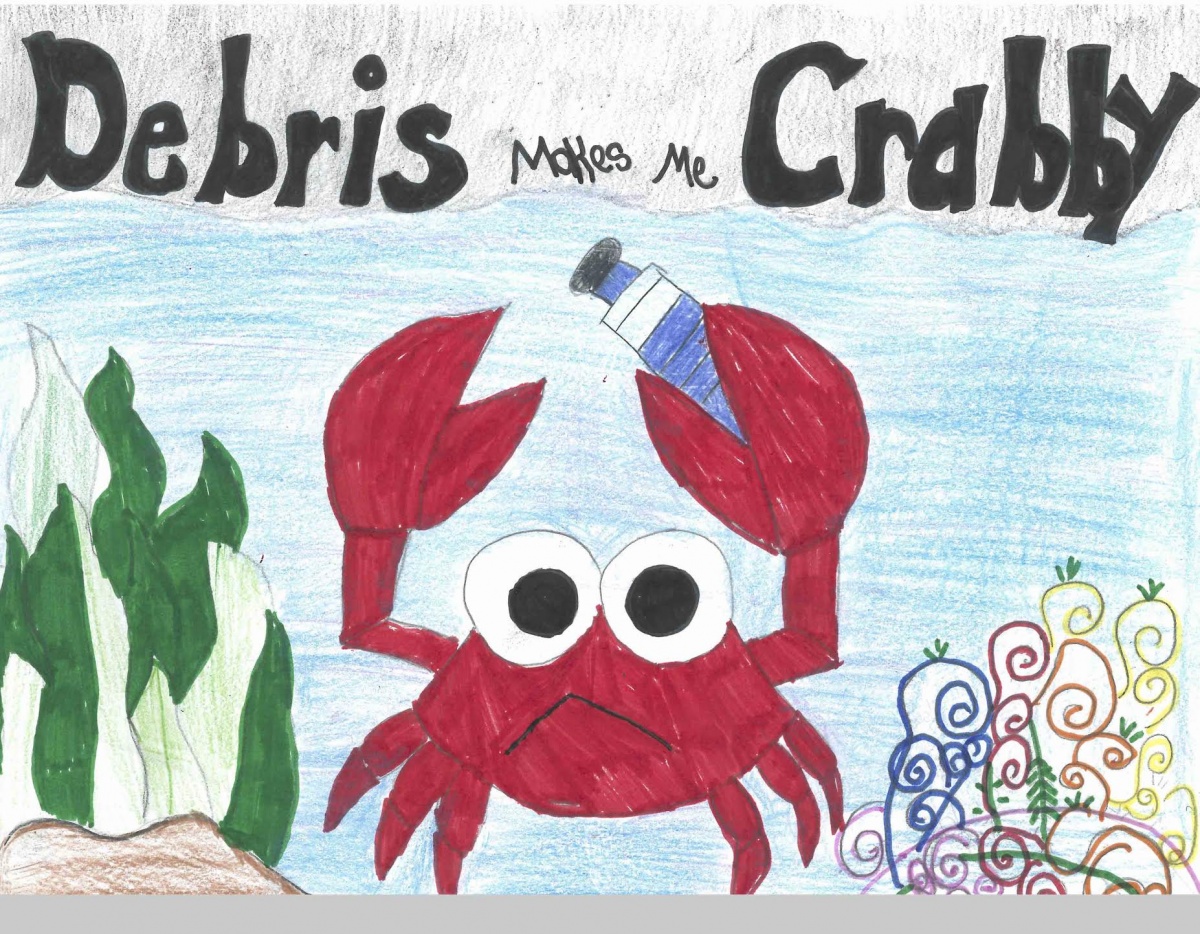Marine Trash and Debris Program

BSEE works to promote safety, protect the environment, and conserve resources offshore through vigorous regulatory oversight and enforcement.
BSEE protects the environment across the 1.7 billion acres of the U.S. Outer Continental Shelf (OCS), including trash and debris from the offshore energy industry. The BSEE Marine Trash and Debris (MT&D) program focuses on education and regulation to minimize environmental damage on the OCS.
Why the MT&D Program?
BSEE's Marine Trash and Debris Program is designed to eliminate debris associated with oil and gas operations on the Outer Continental Shelf (OCS). We do this by:

- requiring safe practices for handling trash,
- manifesting trash sent to shore,
- displaying MT&D placards,
- and providing educational training for all personnel working on offshore facilities.
There are many sources of marine trash and debris. Marine trash and debris includes any items in our oceans and coastal waters that people lose or purposely discard. Such items vary in their durability and may persist for months, years, and even for centuries. Items that are composed of organic materials (e.g., food, cotton, and paper) will decompose in weeks or months. However, inorganic items such as metals, synthetic materials, and plastics persist for very long durations and have become a significant problem in our oceans. The chart below depicts the estimated time it takes for various items of MT&D to decompose. Glass is estimated to take up to a million years to decompose.

Scientists tell us that plastics do not truly decompose. They do not “mineralize,” which means to break down into their elemental parts, i.e., the minerals that compose them. They retain their basic structure as plastic, but just continue to break into smaller and smaller pieces. Eventually, the pieces get so small that they are the size of marine plankton. Researchers have found the concentration of plastic particles in the North Pacific Ocean currents is 45 times higher than the concentration of plankton in that area. Ocean currents concentrate floating particles, and this can be a significant problem. Animals that feed on plankton are also ingesting quantities of plastic.
Plastics in our oceans come from many sources. Land-based sources actually contribute a large portion of the MT&D to our oceans. Much debris is deposited directly into rivers and floats down to the sea. However, even debris that is deposited on the land itself can find its way into the ocean. For example, a plastic bag that held 20 pounds of ice can be lost from the back of a pick-up truck and fall into the ditch. The sun works on it and it starts breaking into smaller and smaller pieces. The next flooding rain washes the plastic pieces into the nearest creek or bayou, where it eventually finds its way into our coastal bays and into the ocean. Of course, boat traffic is another major source of debris in our oceans.

Information Source: National Park Service, Mote Marine Lab
MT&D Requirements
BSEE requirements for prevention of MT&D are described in the Notice to Lessees 2012-G01. Here's a summary of the requirements.
- Training. All personnel working offshore for oil and gas Operators must have MT&D training. The MT&D training program includes four requirements.
- Personnel view a MT&D slide show presentation or video, annually. Approved slides and videos are available on the website of the Offshore Operators' Committee.
- Management emphasizes their commitment to marine debris prevention.
- Maintain attendance records.
- Make records available for inspection by BSEE personnel.
- Placards. Marine Trash and Debris warning and information placards must be displayed on offshore structures large enough to have sleeping or food preparation facilities. Placards must follow guidelines in NTL 2012-G01.
- Reporting. Operators must provide BSEE with an annual report describing their MT&D training. This report must be filed by January 31 of each year and should be sent via email to marinedebris@bsee.gov. For a sample report, click here.
- Site Clearance. BSEE requires offshore O&G structures to be removed when they reach the end of their usefulness. Alternatively, some structures can be converted into permanent artificial reefs. BSEE requires structures destroyed by storms to be salvaged and removed, since they have not been properly cleaned for reefing.
- Authorities. BSEE regulates marine trash and debris for oil & gas operations on the OCS through 30 CFR 250, Subpart C – Pollution Prevention and Control, 250.300(b) (6), 250.300(c) and (d); 30 CFR 250, Subpart Q – Decommissioning Activities, 250.1703 and 250.1704; and 30 CFR 250.1740 – 250.1743 (Site Clearance for Wells, Platforms, and Other Facilities). For renewable energy development on the OCS, BSEE regulates marine debris through 30 CFR 285.105 and 285.906. Furthermore, the intentional jettisoning of trash has been the subject of strict laws such as MARPOL-Annex V and the Marine Plastic Pollution Research and Control Act, and regulations imposed by various agencies including the United States Coast Guard (USCG) and the Environmental Protection Agency (EPA).

MT&D Inspections
- Offshore MT&D inspections are usually performed in conjunction with other BSEE inspections and typically include the following components.
- Training records/certification for personnel present on the structure.
- Informational placards.
- Labeling loose items.
- Securing loose items.
- Onshore inspections may be conducted and include the following.
- Review the Operator's waste management plan.
- Check the training records/certifications for a company and its contractors.
- Hurricane procedures are of particular interest to insure that lightweight items are secured against loss under storm conditions.
The BSEE MT&D Program will strive to enhance the required educational program. This will be done by adding new materials with varied approaches and information to interest the workers. The goal is to produce a grass roots commitment among offshore workers towards the prevention of trash and debris entering our oceans.
Keep the Sea Free of Debris – Wallpaper/Screensaver
Here is some great art work from the NOAA Marine Debris Program calendars. Each year in October, students in kindergarten through 8th grade submit art work based on the theme, “Keep the Sea Free of Debris”. The 13 winning art pieces are used for the calendar (cover art and 12 months). We encourage you to use these images (especially offshore) for computer “desktop backgrounds”, for screensavers, on phones, etc. The download includes a Readme file with more information and instructions. The idea is to constantly place these concepts before offshore workers to remind them to prevent marine debris.
Marine Debris Wallpaper/Screensaver download

